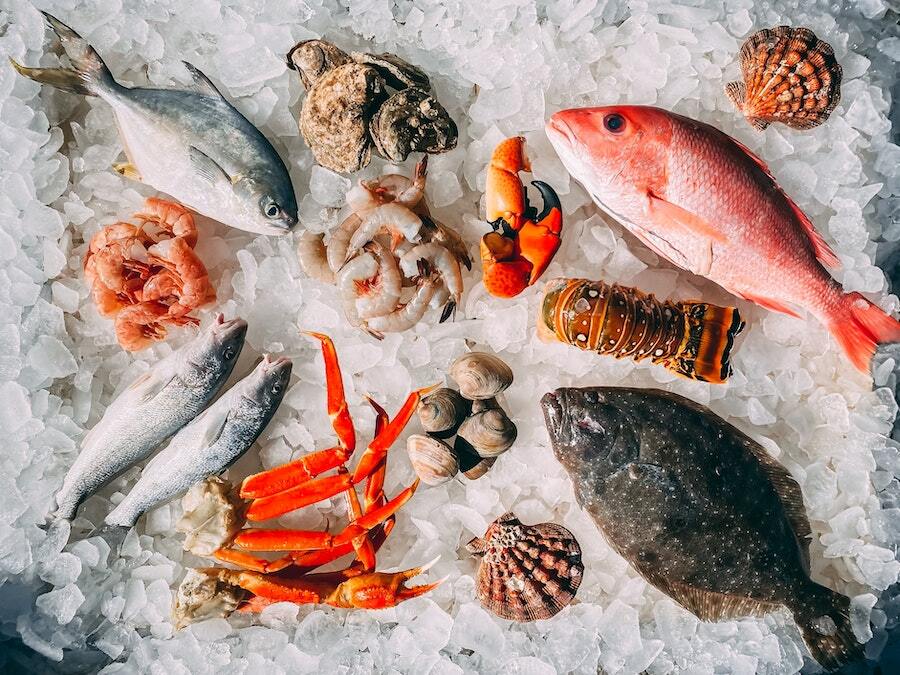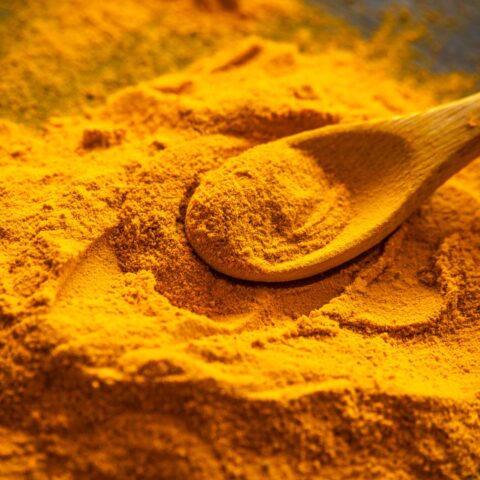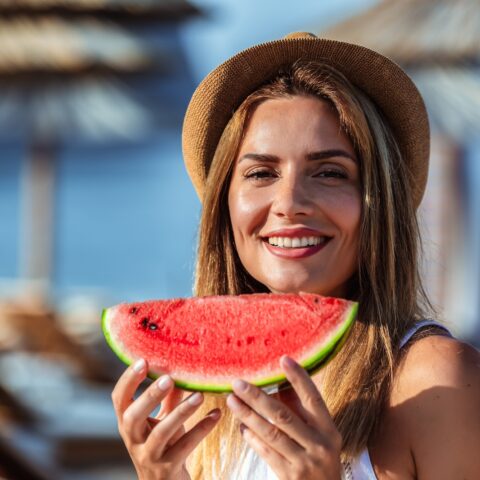Omega-3 Fatty Acid Content of Fish and Seafood

Since the 1990s, perhaps the single most important dietary recommendation to improve our health and prevent chronic disease is to increase our dietary intake of omega-3 fatty acids which are found primarily in fatty fish. Thousands of scientific papers spanning a variety of diseases demonstrate the health benefit of these omega-3 fatty acids in fish and seafood. In randomized clinical trials that enrolled patients with pre-existing coronary heart disease, omega-3 fatty acid supplements significantly reduced cardiovascular events (deaths, non-fatal heart attacks, and non-fatal strokes). Omega-3 fatty acids reduce the risk for cardiovascular disease through a number of mechanisms, including a reduction in heart beat irregularities called arrhythmias, a decrease in blood clots which in turn can decrease the risk for heart attack and stroke, a decrease in blood triglycerides, slightly lower blood pressure, a decreased rate of plaque formation in arteries, and a reduction in overall inflammation, which is now known to be an important factor causing atherosclerosis.
In addition to reducing the risk for heart disease, regular consumption of fish or supplemental omega-3 fatty acids may be helpful in preventing, treating, or improving a wide variety of diseases and disorders, including but not limited to virtually all inflammatory diseases (any disease ending with “itis”), rheumatoid arthritis, inflammatory bowel disorders (Crohn’s disease, ulcerative colitis), periodontal disease (gingivitis), mental disorders (autism, depression, postpartum depression, bi-polar disorder, borderline personality disorder, impaired cognitive development in infants and children), acne, asthma, exercise induced asthma, many types of cancers, macular degeneration, pre-term birth, psoriasis, insulin resistance, type 2 diabetes, cancer cachexia, intermittent claudication, skin damage from sunlight, IgA nephropathy, lupus erythematosus, type 1 diabetes, multiple sclerosis, and migraine headaches.
The average U.S. diet is deficient in omega-3 fatty acids and amounts to a paltry 1.6 grams per day (of which 1.4 grams come from alpha linolenic acid [ALA] and only 0.1 to 0.2 grams come from EPA and DHA). Most of the beneficial effects of omega-3 fatty acids are due to EPA and DHA. Because the conversion of ALA to DHA and EPA in the liver is inefficient, very little ALA is converted to EPA and DHA. Finfish
Try to include at least 0.5-1.8 grams of EPA + DHA per day in your diet, either by eating fish or fish oil supplements. If you have documented coronary heart disease, you should include at least 1.0 grams of EPA + DHA in your diet. Patients with hypertriglyceridemia (elevated or high blood triglycerides) can lower their values by as much as 40 percent by taking 2-4 grams of EPA + DHA per day. If you are taking more than 3 grams of EPA + DHA per day, consult with your physician because high intakes tend to prevent blood from clotting and may cause excessive nose bleeding.
For more information, reference the American Heart Association Scientific Statement “Fish Consumption, Fish Oil, Omega-3 Fatty Acids, and Cardiovascular Disease.”
The Fatty Fish List
Omega-3 in Fish and Seafood per 100-gram Portion
Use this helpful table of omega-3 in fish and seafood to help you understand which fatty fish have the most omega-3 fatty acids ALA, EPA, and DHA.
ALA = alpha linolenic acid (18:3n3), EPA = eicosapentaenoic acid (20:5n3), DHA = docosahexaenoic acid (22:6n3), Tr = Trace amount.
| ALA (g) | EPA (g) | DHA (g) | Total | |
|---|---|---|---|---|
| FINFISH | ||||
| Anchovy, European | 0.5 | 0.9 | 1.4 | |
| Bass, freshwater | Tr | 0.1 | 0.2 | 0.3 |
| Bass, striped | Tr | 0.2 | 0.6 | 0.8 |
| Bluefish | 0.4 | 0.8 | 1.2 | |
| Burbot | – | 0.1 | 0.1 | 0.2 |
| Capelin | 0.1 | 0.6 | 0.5 | 1.2 |
| Carp | 0.3 | 0.2 | 0.1 | 0.6 |
| Catfish, brown bullhead | 0.1 | 0.2 | 0.2 | 0.5 |
| Catfish, channel | Tr | 0.1 | 0.2 | 0.3 |
| Cisco | 0.1 | 0.1 | 0.3 | 0.5 |
| Cod, Atlantic | Tr | 0.1 | 0.2 | 0.3 |
| Cod, Pacific | Tr | 0.1 | 0.2 | 0.3 |
| Croaker, Atlantic | Tr | 0.1 | 0.1 | 0.2 |
| Dogfish, spiny | 0.1 | 0.7 | 1.2 | 2 |
| Dolphinfish | Tr | Tr | 0.1 | 0.1 |
| Drum, black | Tr | 0.1 | 0.1 | 0.2 |
| Drum, freshwater | 0.1 | 0.2 | 0.3 | 0.6 |
| Eel, European | 0.7 | 0.1 | 0.1 | 0.9 |
| Flounder, unspecified | Tr | 0.1 | 0.1 | 0.2 |
| Flounder, yellowtail | Tr | 0.1 | 0.1 | 0.2 |
| Grouper, jewfish | Tr | Tr | 0.3 | 0.3 |
| Grouper, red | – | Tr | 0.2 | 0.2 |
| Haddock | Tr | 0.1 | 0.1 | 0.2 |
| Hake, Atlantic | Tr | Tr | Tr | 0 |
| Hake, Pacific | Tr | 0.2 | 0.2 | 0.4 |
| Hake, red | – | 0.1 | 0.1 | 0.2 |
| Hake, silver | 0.1 | 0.2 | 0.3 | 0.6 |
| Hake, unspecified | – | 0.1 | 0.4 | 0.5 |
| Halibut, Greenland | Tr | 0.5 | 0.4 | 0.9 |
| Halibut, Pacific | 0.1 | 0.1 | 0.3 | 0.5 |
| Herring, Atlantic | 0.1 | 0.7 | 0.9 | 1.7 |
| Herring, Pacific | 0.1 | 1 | 0.7 | 1.8 |
| Herring, round | 0.1 | 0.4 | 0.8 | 1.3 |
| Mackerel, Atlantic | 0.1 | 0.9 | 1.6 | 2.6 |
| Mackerel, chub | 0.3 | 0.9 | 1 | 2.2 |
| Mackerel, Japanese horse | 0.1 | 0.5 | 1.3 | 1.9 |
| Mackerel, king | – | 1 | 1.2 | 2.2 |
| Mullet, striped | 0.1 | 0.3 | 0.2 | 0.6 |
| Mullet, unspecified | Tr | 0.5 | 0.6 | 1.1 |
| Ocean perch | Tr | 0.1 | 0.1 | 0.2 |
| Perch, white | 0.1 | 0.2 | 0.1 | 0.4 |
| Perch, yellow | Tr | 0.1 | 0.2 | 0.3 |
| Pike, northern | Tr | Tr | 0.1 | 0.1 |
| Pike, walleye | Tr | 0.1 | 0.2 | 0.3 |
| Plaice, European | Tr | 0.1 | 0.1 | 0.2 |
| Polluck | – | 0.1 | 0.4 | 0.5 |
| Pompano, Florida | – | 0.2 | 0.4 | 0.6 |
| Ratfish | Tr | Tr | 0.1 | 0.1 |
| Rockfish, brown | Tr | 0.3 | 0.4 | 0.7 |
| Rockfish, canary | Tr | 0.2 | 0.3 | 0.5 |
| Rockfish, unspecified | Tr | 0.2 | 0.3 | 0.5 |
| Sablefish | 0.1 | 0.7 | 0.7 | 1.5 |
| Salmon, Atlantic | 0.2 | 0.3 | 0.9 | 1.4 |
| Salmon, Chinook | 0.1 | 0.8 | 0.6 | 1.5 |
| Salmon, chum | 0.1 | 0.4 | 0.6 | 1.1 |
| Salmon, coho | 0.2 | 0.3 | 0.5 | 1 |
| Salmon, pink | Tr | 0.4 | 0.6 | 1 |
| Salmon, sockeye | 0.1 | 0.5 | 0.7 | 1.3 |
| Saury | 0.1 | 0.5 | 0.8 | 1.4 |
| Scad, Muroaji | 0.1 | 0.5 | 1.5 | 2.1 |
| Scad, other | – | 0.1 | 0.3 | 0.4 |
| Sea bass, Japanese | Tr | 0.1 | 0.3 | 0.4 |
| Seatrout, sand | Tr | 0.1 | 0.2 | 0.3 |
| Seatrout, spotted | Tr | 0.1 | 0.1 | 0.2 |
| Shark, unspecified | – | Tr | 0.5 | 0.5 |
| Sheepshead | Tr | 0.1 | 0.1 | 0.2 |
| Smelt, pond | – | 0.1 | 0.2 | 0.3 |
| Smelt, rainbow | 0.1 | 0.3 | 0.4 | 0.8 |
| Smelt, sweet | 0.3 | 0.2 | 0.1 | 0.6 |
| Snapper, red | Tr | Tr | 0.2 | 0.2 |
| Sole, European | Tr | Tr | 0.1 | 0.1 |
| Sprat | – | 0.5 | 0.8 | 1.3 |
| Sturgeon, Atlantic | Tr | 1 | 0.5 | 1.5 |
| Sturgeon, common | 0.1 | 0.2 | 0.1 | 0.4 |
| Sunfish, pumpkinseed | Tr | Tr | 0.1 | 0.1 |
| Swordfish | – | 0.1 | 0.1 | 0.2 |
| Trout, arctic char | Tr | 0.1 | 0.5 | 0.6 |
| Trout, brook | 0.2 | 0.2 | 0.2 | 0.6 |
| Trout, lake | 0.4 | 0.5 | 1.1 | 2 |
| Trout, rainbow | 0.1 | 0.1 | 0.4 | 0.6 |
| Tuna, albacore | 0.2 | 0.3 | 1 | 1.5 |
| Tuna, bluefin | – | 0.4 | 1.2 | 1.6 |
| Tuna, skipjack | 0.1 | 0.3 | 0.4 | |
| Tuna, unspecified | – | 0.1 | 0.4 | 0.5 |
| Whitefish, lake | 0.2 | 0.3 | 1 | 1.5 |
| Whiting, European | Tr | Tr | 0.1 | 0.1 |
| Wolffish, Atlantic | Tr | 0.3 | 0.3 | 0.6 |
| CRUSTACEANS | ||||
| Crab, Alaska king | Tr | 0.2 | 0.1 | 0.3 |
| Crab, blue | Tr | 0.2 | 0.2 | 0.4 |
| Crab, Dungeness | – | 0.2 | 0.1 | 0.3 |
| Crab, queen | Tr | 0.2 | 0.1 | 0.3 |
| Crayfish, unspecified | Tr | 0.1 | Tr | 0.1 |
| Lobster, European | 0.1 | 0.1 | 0.2 | |
| Lobster, northern | 0.1 | 0.1 | 0.2 | |
| Shrimp, Atlantic brown | Tr | 0.2 | 0.1 | 0.3 |
| Shrimp, Atlantic white | Tr | 0.2 | 0.2 | 0.4 |
| Shrimp, Japanese | Tr | 0.3 | 0.2 | 0.5 |
| Shrimp, northern | Tr | 0.3 | 0.2 | 0.5 |
| Shrimp, other | Tr | 0.1 | 0.1 | 0.2 |
| Shrimp, unspecified | Tr | 0.2 | 0.1 | 0.3 |
| Spiny lobster, Caribbean | Tr | 0.2 | 0.1 | 0.3 |
| Spiny lobster, southern rock | Tr | 0.2 | 0.1 | 0.3 |
| MOLLUSKS | ||||
| Abalone, New Zealand | Tr | Tr | – | 0 |
| Abalone, South African | Tr | Tr | Tr | 0 |
| Clam, hardshell | Tr | Tr | Tr | 0 |
| Clam, hen | – | Tr | Tr | 0 |
| Clam, littleneck | Tr | Tr | Tr | 0 |
| Clam, Japanese hardshell | – | 0.1 | 0.1 | 0.2 |
| Clam, softshell | Tr | 0.2 | 0.2 | 0.4 |
| Slam, surf | Tr | 0.1 | 0.1 | 0.2 |
| Conch, unspecified | Tr | Tr | Tr | 0 |
| Cuttlefish, unspecified | Tr | Tr | Tr | 0 |
| Mussel, blue | Tr | 0.2 | 0.3 | 0.5 |
| Mussel, Mediterranean | – | 0.1 | 0.1 | 0.2 |
| Octopus, common | – | 0.1 | 0.1 | 0.2 |
| Oyster, European | 0.1 | 0.3 | 0.2 | 0.6 |
| Oyster, Pacific | Tr | 0.4 | 0.2 | 0.6 |
| Periwinkle, common | 0.2 | 0.5 | Tr | 0.7 |
| Scallop, Atlantic deep sea | Tr | 0.1 | 0.1 | 0.2 |
| Scallop, calico | Tr | 0.1 | 0.1 | 0.2 |
| Scallop, unspecified | Tr | 0.1 | 0.1 | 0.2 |
| Squid, Atlantic | Tr | 0.1 | 0.3 | 0.4 |
| Squid, short-finned | Tr | 0.2 | 0.4 | 0.6 |
| Squid, unspecified | Tr | 0.1 | 0.2 | 0.3 |
| FISH OILS | ||||
| Cod liver oil | 0.7 | 9 | 9.5 | 19.2 |
| Herring oil | 0.6 | 7.1 | 4.3 | 12 |
| Menhaden oil | 1.1 | 12.7 | 7.9 | 21.7 |
| MaxEPAT, concentrated | 0 | 17.8 | 11.6 | 29.4 |
| Salmon oil | 1 | 8.8 | 11.1 | 20.9 |
Source: Provisional Table on the Content of Omega-3 Fatty Acids and Other Fat Components in Selected Foods J Exler, JL Weihrauch, Nutrition Monitoring Division, Human Nutrition Information Service, USDA Pamphlet HNIS/PT-103, Nutrient Data Research Branch, USDA/HNIS, Federal Building Room 315, Hyattsville, MD 20782 1986* 6 pp (English)
Loren Cordain, Ph.D.
As a professor at Colorado State University, Dr. Loren Cordain developed The Paleo Diet® through decades of research and collaboration with fellow scientists around the world.
More About The Author



